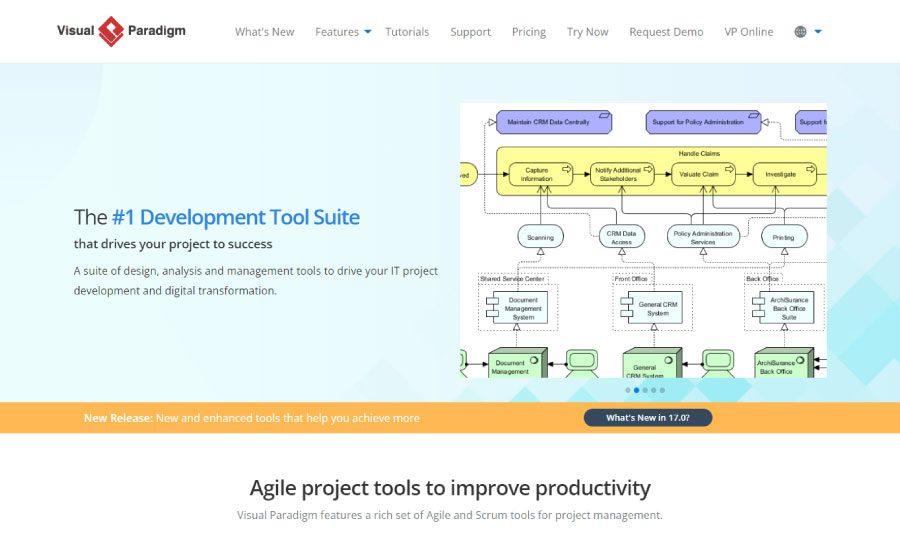Disclosure: This post has affiliate links. I earn a commission at no extra cost to you. I only recommend products I personally believe in. More info on my Privacy Policy page.
Planning Your Customer Journey and the 10 Best Tools
Table of Contents
Hosting a great website is about more than just the content – you need to ensure that your users are getting the best experience possible! That means creating a site that is fun to use, easy to navigate, and that will accurately reflect your brand.
But, what if your website just doesn’t seem to be getting the results you’d hoped for? You’ve taken the time to work on your SEO and your backlinks, yet, you’re just not seeing the return for all of your hard work. So, what’s missing? As it happens, the answer you’re looking for is most likely in your customer journey maps.
But what is a customer journey map, and how can you enhance the customer experience on your website? Let’s dive in and take a look at what you need to know.

What is the Customer Journey?
As the name suggests, the customer journey is the average route your customer will take when they visit your website. Of course, not every existing customer journey is the same, and most people will likely take a look at different things on your site – there are different customer touchpoints and areas you need to map ahead for.
However, there will likely be a pattern in your clients’ average customer journey. That’s what we’re looking to tap into!
For example, an average customer journey for one of your clients could be that they found your website by searching for a specific keyword or a phrase. They then clicked on the link to your website and searched for an article, a blog, a service, or an item.
Then, having found what they were looking for, they may have moved on to a completely different area of your site until finally checking out and leaving. So, their customer journey started from the moment they found your website up to the point where they completed a sale and left.
But – regardless of whether or not you survey customers on this – each visitor journey is likely to be very different!
When checking how your customers interact with your website, you may come to find that they take a different route from the one you likely expected.
For example, your customer may even come across something on your website that encourages them to leave and find a different provider elsewhere (perish the thought!).
They may also simply find that your website isn’t quite as easy to navigate as it should be – especially on mobile. In this day and age, we expect to get what we want – when we want it! If a website seems like it’s too much hassle to navigate, it’s easy enough to just click off and go elsewhere.
Ideally, that is something you want to avoid, which is where a customer journey map comes in handy!

Customer Journey Mapping
Customer journey mapping is a great way of putting yourself in your customer’s shoes and getting a real feel for the customer experience on your website. Why not try and create a customer journey for yourself based on a website you visit regularly?
Take the time to consider everything a customer must go through to reach the final checkout. Is it easy for them to find what they need? Is the information they are looking for readily available?
And, what about if they come across an issue – Is there a way for them to reach a customer service team easily for help? Are there any easy-to-use help social channels on your website?
User journeys need to be quick, efficient, and ultimately satisfying. Not only will a solid customer journey mapping process help you to accurately predict their needs and give you a deeper understanding of your customers’ experiences, but it will also help to improve the way your business drives for success.
That’s why, even though it may seem like a very simple idea, the incredible benefits make customer journey mapping important for any business. You could be a butcher, a baker, a candlestick maker… you need a journey map.
However, creating a customer journey map for yourself can be a little tricky. Thankfully, there are plenty of customer journey map templates and tools online to help you on your way. Let’s start digging into what’s available.
Why Use Tools?
As easy as it may seem to create your own customer journey map, doing it alone won’t achieve anything. You will simply navigate your own website as you’d see fit – and, given that you will have hired the graphic designer who put everything all together, chances are that the website suits you perfectly as it is.
To get a deeper insight into how real customers feel when using your website, it’s best to use professional tools to help you along the way.
So, let’s take a closer look at some of the best customer journey map tools available online! But first…
Grab a ’Jobs to Do’ Template
When first taking on some customer journey mapping examples, it’s best to view your customer’s experience as a process, on a sort of ‘jobs to do’ template. Thinking of what your customer needs, and how they are going to get to it will help to give you a better visual representation of where your customer is going to head to on your website, and where they’ll likely go outside of it.
Consider a ‘Buyer Journey’ Template
A buyer journey template is another shell you can use to map things out. This template works on five key principles – being aware of your service, showing interest, building desire, mulling it over, and making a decision. And, you can try it for free!
At each stage of this template, you need to convince your visitors that the services you offer are worthwhile, perfectly suited to their needs, that you’re the best at what you do – and – most importantly – that buying the products or service will ultimately change their lives for the better!
All set? Let’s get started.
HubSpot Buyer Persona
When looking for journey templates, you’ll come across more than a few ‘buyer persona’ shells. You can use these to create a typical visitor. You get to fill out their details, their personalities, and the customer’s journey.
HubSpot’s fantastic Buying Persona tool allows you to create realistic customers, with super-accurate customer behaviour on your website, without you making the mistake of building buyer personas that are too like you – and thus providing inadequate results.

UXPressia
UXPressia is software that allows you to create multiple journey maps to measure customer experience. You can use it to create multiple personas and apply them to specific maps and journeys as you go. Think of it as your muse when searching for customer pain points.
It’s easy to export your data from this service, and the customisation features on board are built with collaboration in mind. It’s ideal for small to large groups trying to make sense of customer feedback.

Lucidchart
Lucidchart is a flowchart-style system that’s perfect for transferring your customer research journeys to Microsoft Office tools. This tool will allow you to map out journeys simply – there are no extra bells and whistles, just a straightforward user flowchart.
Anyone completely new to customer journey mapping can leap straight in and immediately benefit. We highly recommend Lucidchart for its low-cost points, too.

Microsoft Visio
If you’ve ever used Microsoft Office, you may already be familiar with Visio. It, too, is a flowchart system that is completely bespoke to your needs. This means that you can create diagrams and flows that fit in with your growth plans without all the horrible growing pains.

Visual Paradigm
If you only need user research on a specific journey or two, then Visual Paradigm is the one for you. Not only can you create flows and charts, but you can also set up graphs and stage-by-stage processes. This means you can filter down to one or two specific moments or stages in the user experience.

Trello
Trello is great if you want to create and analyse journeys from a customer’s perspective using a variety of web applications and collaborative tools. It can be used in various ways, but it definitely adapts really well to mapping customer journeys.
You may even have come across it before as a team planning app. Considering it starts out as a free service, it’s seriously impressive.

SprocketRocket Strategy Kit
SprocketRocket offers a free starter kit that you can use to perfect your website while keeping your customers’ experiences in mind.
It’s a kit that will help you to see how your average customer interacts with your website time and again. This is absolutely essential if you stand any chance of creating better future interactions for your entire organisation!
It’ll help you create a customer journey without making any bold or daft assumptions. Just grab that raw data and start scaling up with your visitors in mind.

Why Are Customer Journeys Important?
In an ideal world, potential customers would simply see an ad or a link, click on it, and make a purchase. But, in the real world, things aren’t so simple!
That is why it is so important for businesses of all shapes and sizes to carefully consider just how they can match or even exceed their customer expectations. No two customer journey maps are ever going to be the same!
For the best results, you need to create valuable customer data. Take the time to research your market carefully, putting yourself in their shoes – and see if you can gain a shared understanding to identify gaps in your website.
You are also going to need a solid SEO strategy in place, and map out each stage of the customer’s journey without bias.
Why not get in touch with the team at SEO CoPilot to hit the ground running with a great SEO plan of attack that enhances journeys for all your customers?
